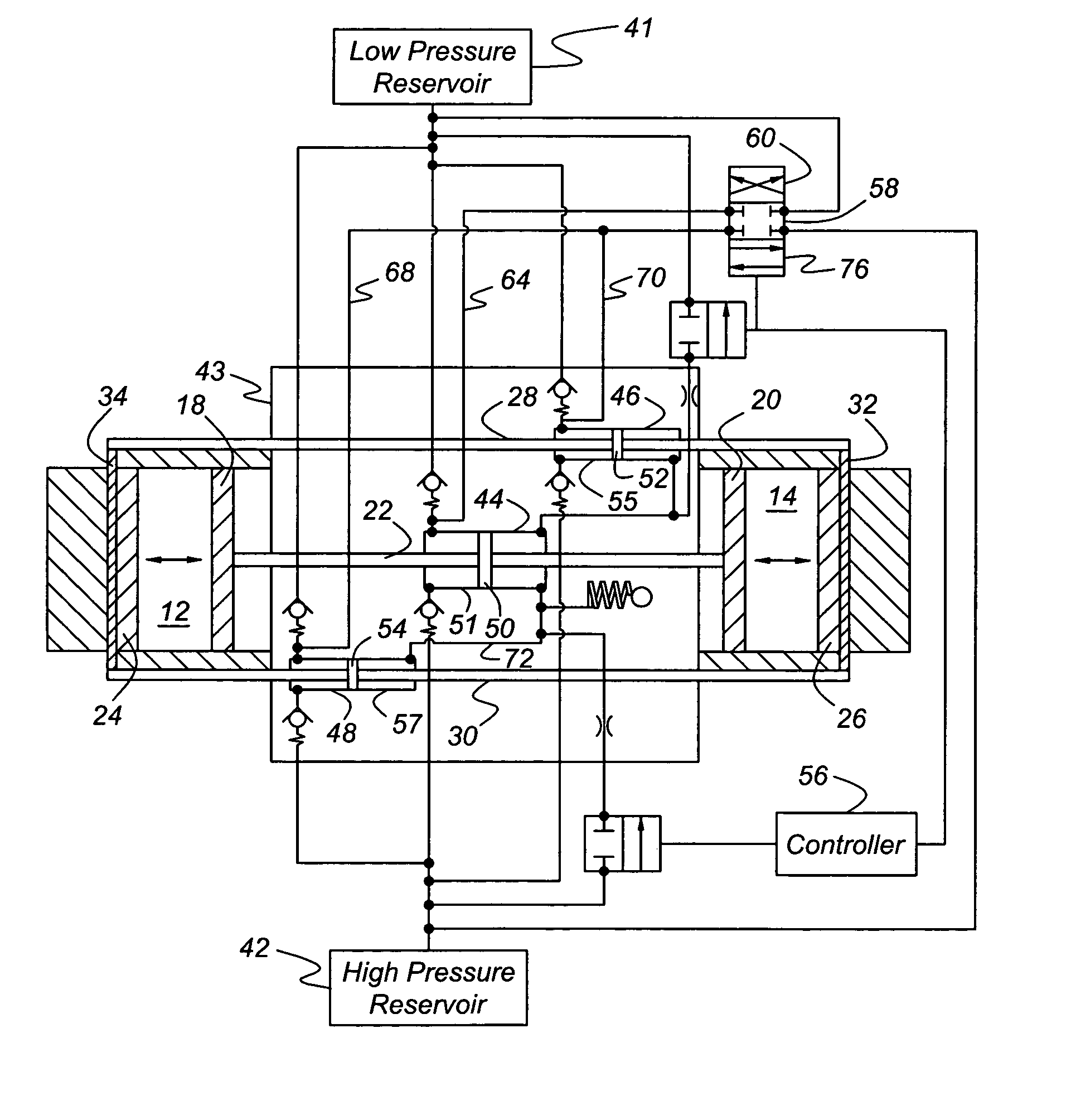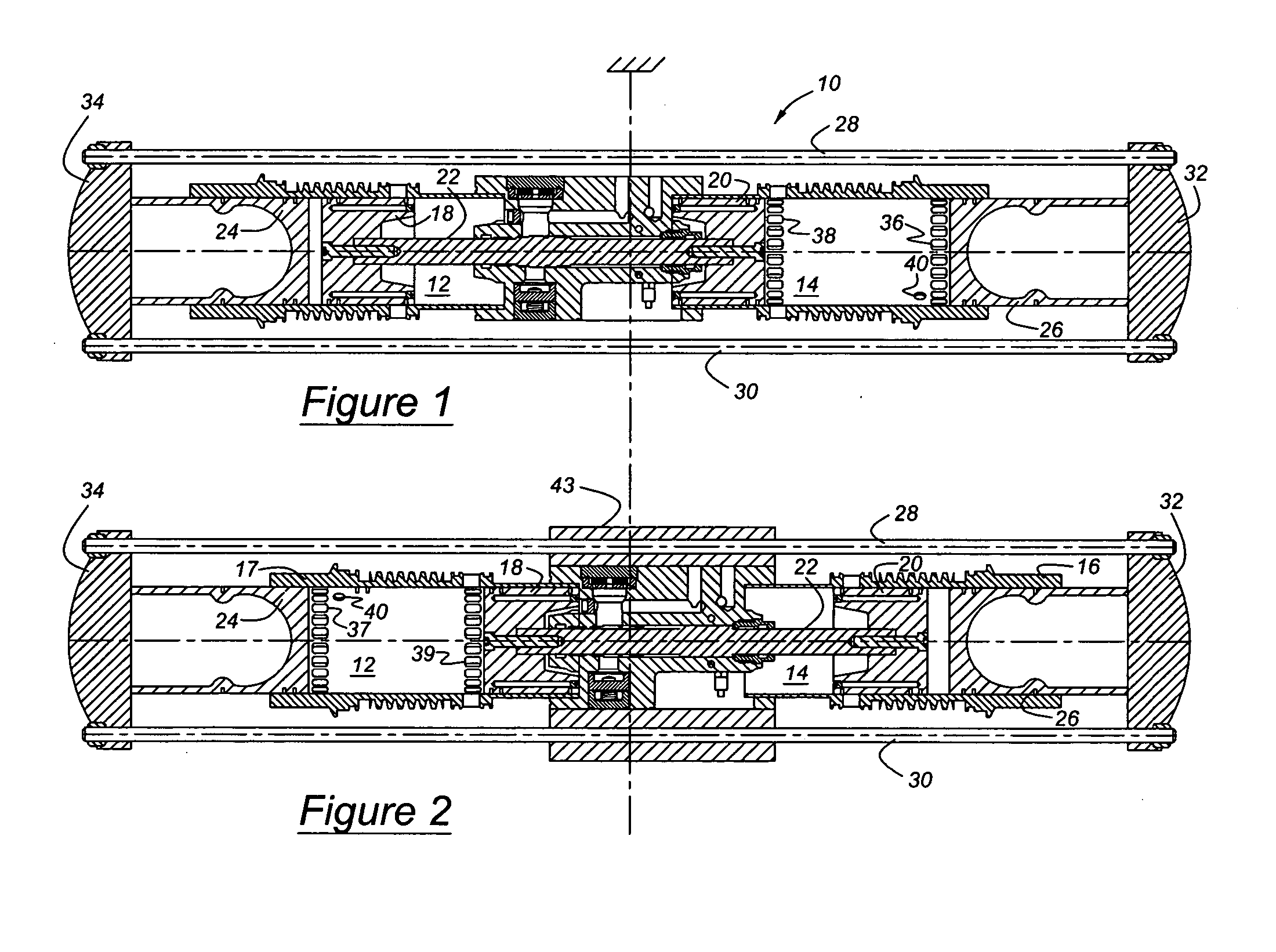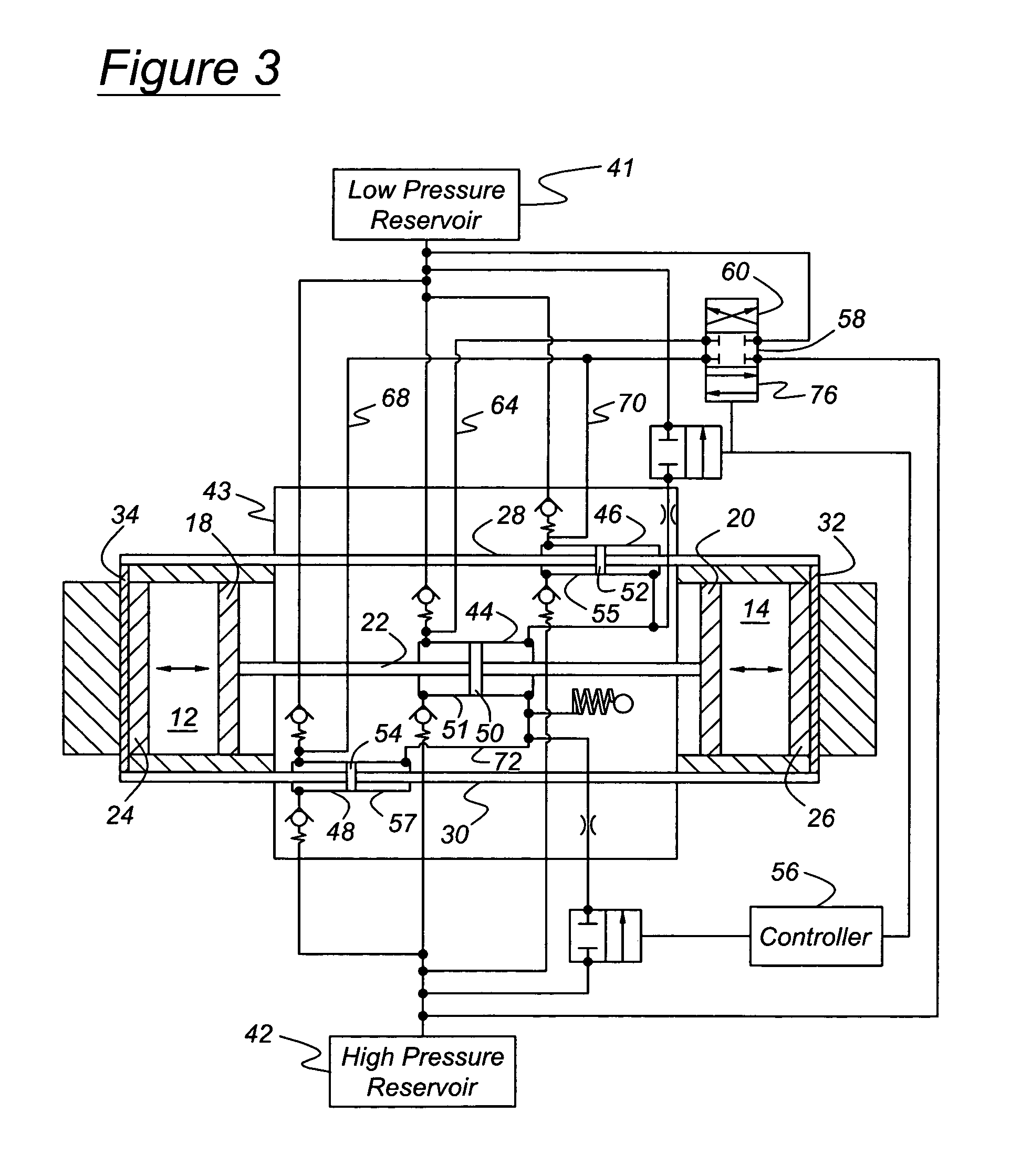Compression pulse starting of a free piston internal combustion engine
a technology of internal combustion engine and compression pulse, which is applied in the direction of engine starter, machine/engine, muscle operated starter, etc., can solve the problems of partial vacuum in the cylinder, leakage of air charge from the cylinder through the inlet and exhaust ports, and leakage, so as to increase the kinetic energy, and the effect of sufficient magnitude of kinetic energy
- Summary
- Abstract
- Description
- Claims
- Application Information
AI Technical Summary
Benefits of technology
Problems solved by technology
Method used
Image
Examples
Embodiment Construction
[0015] Referring first to FIGS. 1 and 2, a free piston engine 10 includes a first cylinder 12 and a second cylinder 14, axially aligned with the first cylinder, the cylinders being located in cylinder liners or engine blocks 16, 17. A first pair of pistons, inner pistons 18, 20, are mutually connected by a push rod 22. A first piston 18 of the first piston pair reciprocates within the first cylinder 12, and the second piston 20 of the first piston pair reciprocates within the second cylinder 14. A second pair of pistons, outer piston 22, 24, are connected mutually by pull rods 28, 30, secured mutually at the axial ends of pistons 24, 26 by bridges 32, 34. A first piston of the second or outer piston pair reciprocates within the first cylinder 12, and a second piston 26 of the outer piston pair reciprocates within the first cylinder 14. Each cylinder 12, 14 is formed with air inlet ports 36, 37 and exhaust ports 38, 39. In FIG. 1, the ports 37, 39 of cylinder 12 are closed by pistons...
PUM
 Login to View More
Login to View More Abstract
Description
Claims
Application Information
 Login to View More
Login to View More - R&D
- Intellectual Property
- Life Sciences
- Materials
- Tech Scout
- Unparalleled Data Quality
- Higher Quality Content
- 60% Fewer Hallucinations
Browse by: Latest US Patents, China's latest patents, Technical Efficacy Thesaurus, Application Domain, Technology Topic, Popular Technical Reports.
© 2025 PatSnap. All rights reserved.Legal|Privacy policy|Modern Slavery Act Transparency Statement|Sitemap|About US| Contact US: help@patsnap.com



